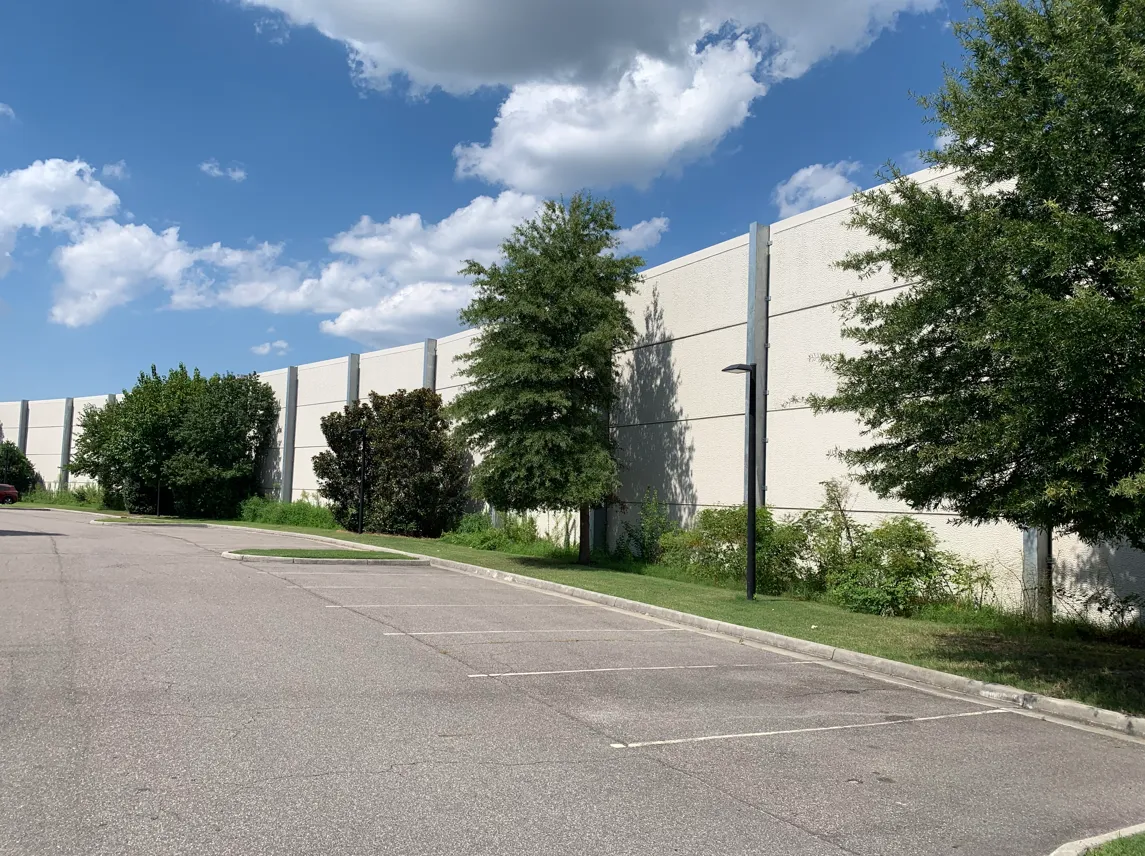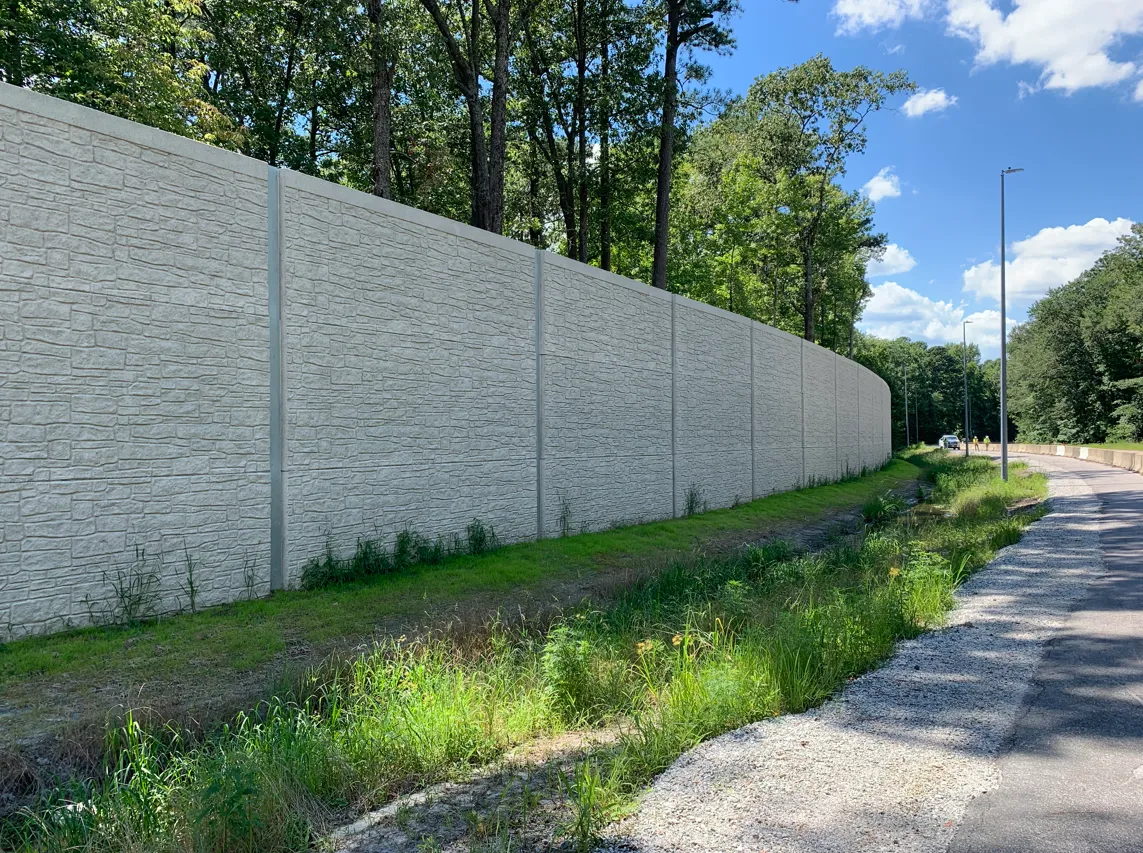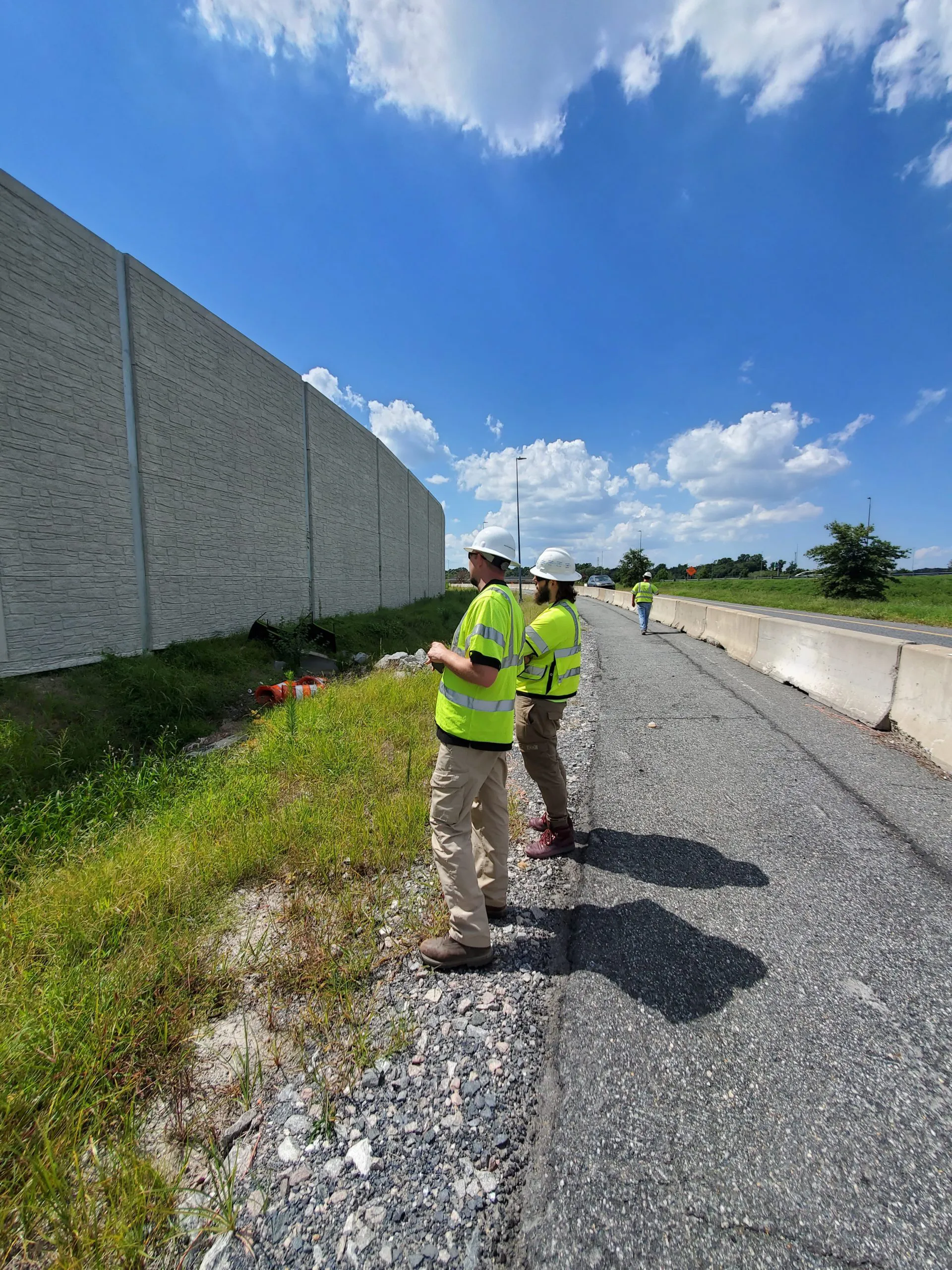Project Description
This project entailed the design of approximately 843,000 square feet of post-and-panel sound barrier and combination sound barrier and retaining walls. There are 18 separate walls located along the east and westbound lanes of I-64, on both the east and west sides of the newly constructed High Rise Bridge located in Chesapeake, VA. The walls consist of precast concrete panels and steel posts fully-embedded into concrete drilled shaft foundations, with maximum wall heights of 32 feet and drilled shaft embedment lengths up to 31 feet.
Located in the Coastal Plain Physiographic province, the predominant soil profile is comprised of thick layers of very soft highly-plastic clay and organic soils, and loose sands, along with high groundwater. These geotechnical characteristics posed several engineering and construction challenges.
Earth Retention worked closely with the design team and contractor to develop design solutions and an installation method that met project budget and scheduling requirements, while adhering to stringent VDOT specifications and review. Several options were explored, and ultimately an auger cast pile foundation system, with fully-embedded “wet stuck” steel posts was the chosen method of installation. The auger cast pile method allows for the construction of grouted shafts up to 36 inches in diameter, using a continuous flight auger that maintains stability of the excavation that would otherwise cave due to weak soils and high groundwater. This method eliminates the need for costly temporary casing. Grout is pumped through the hollow center of the auger to the base as it is withdrawn, providing continuous support of the excavation. After the grouted drilled shaft is constructed, steel posts are installed using the “wet stick” method, where they are fully-embedded to the bottom of the uncured column and protrude above grade to the required top of wall elevation. With wall heights up to 32 feet and drilled shaft embedment depths exceeding 30 feet, this required precise placement of steel posts with lengths exceeding 60 feet and weighing up to 115 pounds per foot. The general contractor and drilling sub-contractor utilized a template and bracing system that enabled the steel posts to be precisely placed in accordance with the strict VDOT design tolerances for location, plumbness, etc.
Another project design challenge was associated with the combination walls, which not only provide stability against lateral wind loads on the upper portion (sound wall), but also lateral earth pressure and surcharge loads acting on the retaining portion at the bottom of the wall. Due to the challenging geotechnical conditions and installation constraints, the typical approach of installing intermediate retaining wall posts and backfilling the retaining wall with normal weight soil or crushed stone aggregate was not feasible. Therefore, Earth Retention proposed a solution that involved backfilling the combination walls with ultra-lightweight backfill (foamed glass aggregate), significantly reducing the lateral earth pressure and surcharge loads applied to the retaining wall. This load reduction allowed for the elimination of intermediate posts and foundations, and costly precast retaining panels that would otherwise be required. This solution also maximized the on-center post spacing to 24 feet, while maintaining a maximum drilled shaft diameter of 36 inches as dictated by the installation method. After thorough review and scrutiny by VDOT and its engineering team, this solution was approved as the first of its kind in regard to magnitude and application which resulted in significant cost savings from both a materials and schedule perspective.
Ultimately, it was Earth Retention’s knowledge and experience of sound barrier and retaining wall design, understanding and interpretation of VDOT specifications, and close coordination between the design team and general contractor that aided in the success of this project. The innovative design and installation solutions that were implemented addressed both the challenging geotechnical conditions and project requirements, while satisfying VDOT’s stringent review and approval process.




